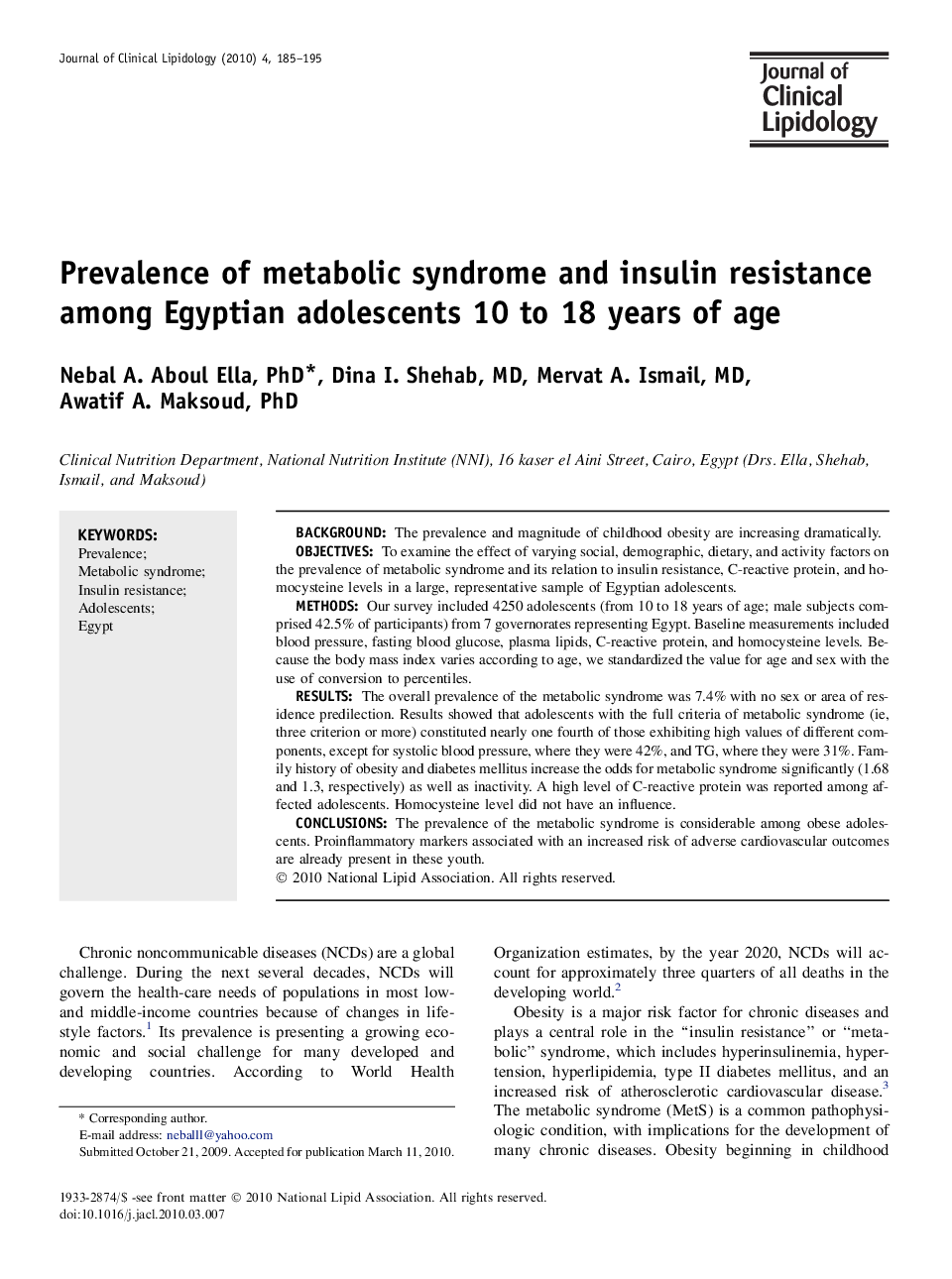| Article ID | Journal | Published Year | Pages | File Type |
|---|---|---|---|---|
| 2966402 | Journal of Clinical Lipidology | 2010 | 11 Pages |
BackgroundThe prevalence and magnitude of childhood obesity are increasing dramatically.ObjectivesTo examine the effect of varying social, demographic, dietary, and activity factors on the prevalence of metabolic syndrome and its relation to insulin resistance, C-reactive protein, and homocysteine levels in a large, representative sample of Egyptian adolescents.MethodsOur survey included 4250 adolescents (from 10 to 18 years of age; male subjects comprised 42.5% of participants) from 7 governorates representing Egypt. Baseline measurements included blood pressure, fasting blood glucose, plasma lipids, C-reactive protein, and homocysteine levels. Because the body mass index varies according to age, we standardized the value for age and sex with the use of conversion to percentiles.ResultsThe overall prevalence of the metabolic syndrome was 7.4% with no sex or area of residence predilection. Results showed that adolescents with the full criteria of metabolic syndrome (ie, three criterion or more) constituted nearly one fourth of those exhibiting high values of different components, except for systolic blood pressure, where they were 42%, and TG, where they were 31%. Family history of obesity and diabetes mellitus increase the odds for metabolic syndrome significantly (1.68 and 1.3, respectively) as well as inactivity. A high level of C-reactive protein was reported among affected adolescents. Homocysteine level did not have an influence.ConclusionsThe prevalence of the metabolic syndrome is considerable among obese adolescents. Proinflammatory markers associated with an increased risk of adverse cardiovascular outcomes are already present in these youth.
